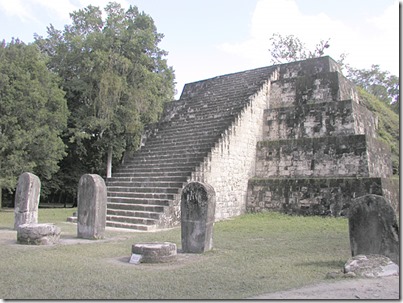The Universal Language Of Public Speaking
In 2003, I traveled to Guatemala with a group of professional communicators from all over the world. We spent one particularly memorable day exploring the Mayan ruins in Tikal, climbing its tall structures and trekking through the forest. It was a magical experience.
But for some reason, the moment I remember best about that trip has nothing to do with the historical site. It has to do with a DJ.
On the last night of our trip, the conference organizers hired a disc jockey. I watched as the DJ struggled to find music that could fill the dance floor. The DJ was aware that we were an international crowd—but everything he played ended up segregating the audience.
If he played a Brazilian tune, the Brazilians would dance. If he played an American pop hit, the Americans and Europeans would dance. If he played something with an African rhythm, the Africans would dance. (Yes, a few people tried dancing to unfamiliar music, but they were the exceptions.)
Then something remarkable happened. The DJ played the first few notes of “Three Little Birds” by Bob Marley—and the dance floor filled up almost immediately. The Americans joined the Chileans, the Ghanaians joined the Filipinos.
The DJ, quite accidentally, had stumbled upon the universal language of music. Bob Marley was the one artist that, for whatever reason, united a diverse group of people from more than 15 countries. (The DJ was no dummy; he played several more Marley hits in a row.)
That made me think: What is the Bob Marley of public speaking? What is the universal language that unites audiences?
In their great book Made to Stick, authors Chip and Dan Heath offer this answer:
“Find a ‘universal language,’ one that everyone speaks fluently. Inevitably, that universal language will be concrete.”
The Heaths point out that while experts will understand abstractions, non-experts will not. Concrete language, full of vivid detail, reaches both audiences. It unites experts and non-experts alike. In his book Lend Me Your Ears, author Max Atkinson offers similar advice:
“More difficult is to know how to approach it if the audience is made up of a mixture of specialists and non-specialists. The safest solution is to pitch it towards the non-specialists, as the specialists in the audience will…be aware of the different levels of expertise among those present.”
Practically speaking, what does that mean? It means anecdotes. Case studies. Stories. It means culling more abstract points out of your presentation—or supplementing them with broadly understandable examples.
Here’s an example.
Instead of saying this: “This bill got bottled up in committee.”
Say this: “The committee has 14 members. Only five of them support us. But there’s good news: that’s one more person than last year. I asked the member who changed his mind why he changed his mind, and he told me that he was deeply affected by the testimony he heard from a local resident named Trudy Hall. Last year, Trudy was diagnosed with… [insert anecdote].”
Don’t miss a thing! Click here to instantly join our mailing list and receive free media training and public speaking tips.




